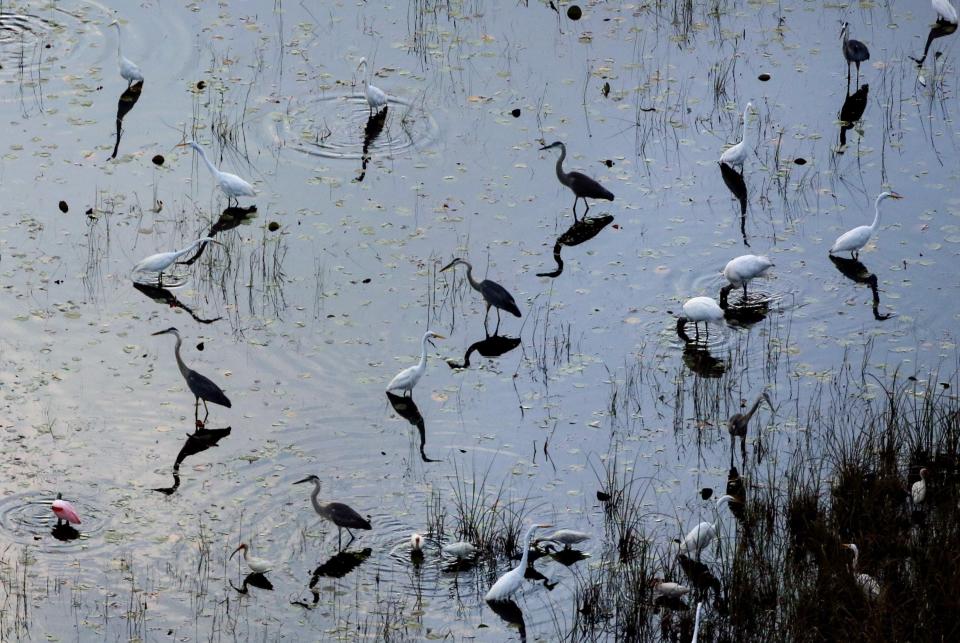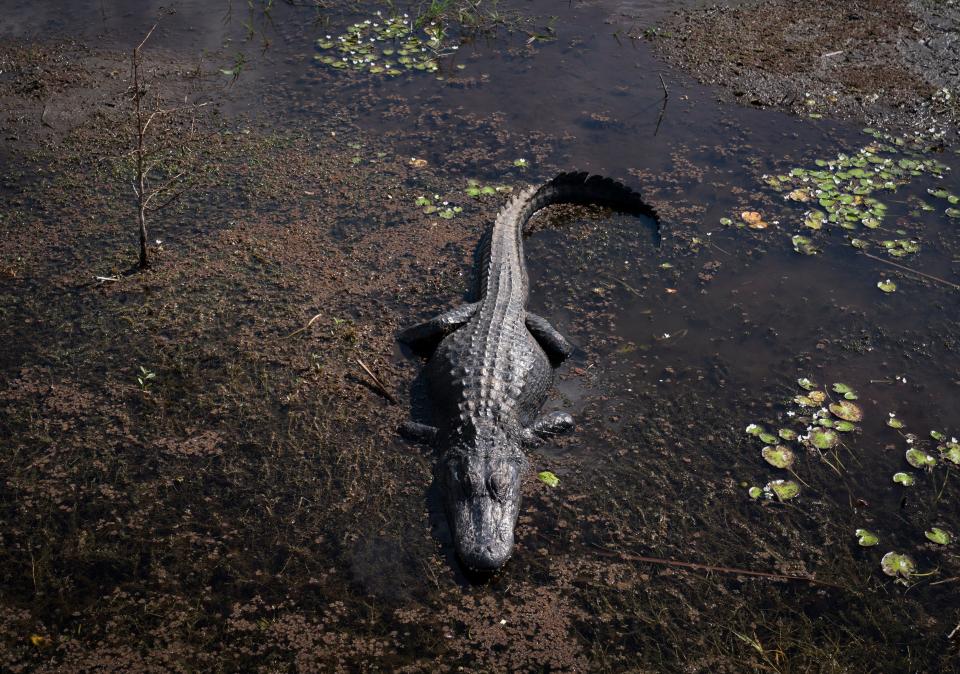Pythons expand territory: unverified but 'credible sightings' for first time in Lox Refuge
The last stronghold of the northern Everglades – a sprawling scruff of emerald in western Palm Beach County – had its first reported invasive python sightings this fall as the parasite slithers north.
Biologists had long suspected the destructive snake was in the Arthur R. Marshall Loxahatchee National Wildlife Refuge after python DNA was detected in the preserve’s veins of freshwater.
But as recently as late October, invasive plant control contractors for the South Florida Water Management District put eyes on one of the voracious eaters, adding to two other unverified but “credible” sightings.
Paparazzi, hecklers and a fight: Loxahatchee Refuge closes section after owls harassed
Lily the fawn: Why a 3-footed fawn is running around at Loxahatchee National Wildlife Refuge
Desperately seeking pythons: 5 ideas the state is considering to see - and capture - snakes
“We have finally, unhappily, sighted a Burmese python in the interior of the refuge,” said University of Florida wildlife professor Frank Mazzotti who leads the Croc Docs research team out of Fort Lauderdale.
![Loxahatchee National Wildlife refuge as seen from a South Florida Water Management research flight Monday, April 29, 2019. "This is an area in the central refuge with lots of nice tree islands," said lead scientist Mark Cook. [BRUCE R. BENNETT/palmbeachpost.com]](https://s.yimg.com/ny/api/res/1.2/WK2bATU6nXdMnAes__cDeA--/YXBwaWQ9aGlnaGxhbmRlcjt3PTk2MDtoPTY0MA--/https://media.zenfs.com/en/palm-beach-daily-news/df88490b9e63bf4954ff62e7de6de019)
Mike Kirkland, an invasive animal biologist with the water management district, said he is meeting with refuge officials this week to discuss how they should best counter the nascent visible python assault.
Besides attempting to capture the python, the best thing to do includes reporting a sighting immediately so a python rapid response unit can be dispatched.
“We know they are in the refuge but haven’t been seeing them and once you start seeing them that is an indication that the population is expanding,” Kirkland said. “The fact that we’ve had a few sightings recently leads me to believe there are more there.”
The district contracts with UF for emergency help with invasive species, including the most recent python sighting in the refuge.
Saltwater invasion: Can $460 million plan restore Loxahatchee River?
Florida's deadliest animals: Which Florida animals are the most dangerous? Interacting with these creatures can turn deadly
“We responded within hours but it was gone,” Mazzotti said. “If you see a python basking and if you are not there quickly, you’ll miss it.”
The refuge is 144,000 acres of tree islands and sawgrass ridges and cattail mires and cypress swamp and sloughs that run like fluid seams through it all. Most of the refuge is accessible only by airboat or helicopter making a quick response almost impossible.

In other areas of South Florida, pythons are often caught while they sun themselves on levees that run through wetland areas or when they are spotted by hunters driving along the levees at night. But there are no levees running through the gut of the Lox Refuge.
“It’s like finding a needle in a haystack,” Kirkland said about nabbing a python in the refuge.
A U.S. Geological Survey study published online in March 2019 said it found evidence of a "resident python population" in the refuge.
Snake hunters needed: Snake hunters catch 95% of pythons they see. Help sought to kill the ones that are hiding
USGS scientist Margaret Hunter tested water throughout the refuge for python DNA between 2014 and 2016, finding the amount of positive samples "consistent with the pattern expected for a resident python population as opposed to sporadic, transient individuals or alternative vectors."
Hunter, who worked with several other USGS researchers on the project, said most of the water that tested positive for python DNA was near the center of the refuge where people would be less likely to spot a snake.

A 10-foot-long python was found on a levee near the southeast side of the refuge in 2016, and there have been sightings in parking lots adjacent to the refuge, but it’s been unclear how established the snake has become.
In September 2019, the water management district announced a new element in its python hunting program that nearly doubled the pay for contractors willing to patrol the refuge.
Record-breaking python: Staggering 18-foot, 9-inch python caught in Everglades breaks state record
Hunters can earn $15 an hour in the refuge as opposed to $10 in other areas of South Florida. Hunters are also paid based an incentive of $50 for each python measuring 4 feet or longer and an extra $25 for each foot measured above 4 feet.
About 5,250 pythons have been removed by district hunters since the program began in March 2017. Florida Fish and Wildlife Conservation Commission hunters caught an additional 3,385 pythons.
“We don’t expect them to capture a lot of pythons because the populations are very low in the refuge compared to other project areas,” Kirkland said about why the district upped the pay in the refuge. “We want to keep it that way and that’s why we give the extra incentive for contractors to service that area.”
Kimberly Miller is a veteran journalist for The Palm Beach Post, part of the USA Today Network of Florida. She covers weather, climate and the environment and has a certificate in Weather Forecasting from Penn State. Contact Kim at [email protected]
This article originally appeared on Palm Beach Post: Burmese pythons spotted for first time in Loxahatchee refuge
